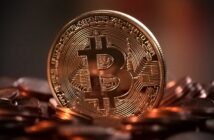credit:https://pixabay.com/
Inflation, the sustained increase in the general price level of goods and services in an economy, is a phenomenon that affects various aspects of economic activity, including employment. Understanding the complex relationship between inflation and employment is crucial for policymakers, businesses, and workers alike. This article delves into the multifaceted impacts of rising inflation on employment levels, focusing on six key areas: wage-price dynamics, sectoral shifts in job availability, workforce productivity, unemployment rates, central bank policies, and the distinction between short-term and long-term employment effects.
1. Wage-Price Dynamics and Employment
Rising inflation typically triggers a wage-price spiral, where workers demand higher wages to keep up with the increased cost of living, which in turn raises business costs. While businesses may initially attempt to absorb these costs, they often face a tough decision: raise prices, which could lead to reduced consumer demand, or cut labor costs by reducing staff or freezing hiring. In the short term, some businesses might expand in anticipation of higher revenues driven by inflation, but this growth is often unsustainable if wage hikes outstrip productivity gains. As wage increases erode profit margins, companies may struggle to remain competitive, leading to long-term job cuts or automation, ultimately hurting employment levels. The key challenge lies in balancing wage growth with productivity; if wages grow too quickly without corresponding productivity increases, the cycle of inflation and job losses becomes difficult to break.
2. Sectoral Shifts in Job Availability
During inflationary periods, the economy’s uneven impact on different sectors often leads to contrasting employment trends. Sectors like energy, commodities, and healthcare typically see increased profitability as demand for essential goods and services rises, prompting businesses in these fields to expand and hire more workers. Conversely, industries reliant on discretionary spending, such as retail, hospitality, and entertainment, often suffer as consumers cut back on non-essential purchases, leading to a decrease in hiring or even layoffs. This shift was notably evident during the COVID-19 pandemic when the surge in prices for necessities, such as food and healthcare, bolstered employment in these sectors, while industries like travel and leisure faced mass closures and workforce reductions. By understanding these sectoral dynamics, policymakers can tailor interventions—such as incentivizing hiring in struggling industries or providing support to rapidly expanding ones—to cushion the impact on overall employment and promote stability.
3. Inflation and Workforce Productivity
Inflation has a complex, dual impact on workforce productivity and employment, driven by both the erosion of purchasing power and the need for businesses to adapt to changing economic conditions. When inflation is high, wages lose their real value, which dampens workers’ morale, often leading to disengagement, reduced effort, and lower overall productivity. This productivity decline forces employers to either cut costs by downsizing or reallocate resources in ways that might not contribute to long-term growth. As businesses focus more on short-term survival rather than long-term innovation, investments in productivity-enhancing technologies and training may be sidelined. Conversely, mild inflation can act as a catalyst for efficiency and innovation. In such environments, firms are motivated to optimize operations, streamline processes, and adopt technological solutions like automation to reduce reliance on costly labor, ultimately driving productivity improvements that might have been slower to emerge in a more stable economic landscape. This dynamic creates a fine balance where inflation can either hinder or stimulate progress, depending on its intensity and the strategic responses of businesses.
4. Unemployment Rates During High Inflation Periods
The Phillips Curve illustrates the traditional inverse relationship between inflation and unemployment, suggesting that as one falls, the other tends to rise, especially in the short run. This theory held during the post-World War II economic boom, where booming economic activity drove down unemployment while pushing inflation upward. However, the concept faltered during stagflation, particularly in the 1970s, when external shocks—like the oil crisis—caused a simultaneous rise in both inflation and unemployment. This anomaly revealed the limitations of the Phillips Curve, emphasizing that inflation and unemployment are not always opposing forces. In such cases, policy makers face the complex challenge of managing both issues at once, requiring multi-faceted strategies, such as fiscal interventions, monetary policy adjustments, and supply-side reforms, to mitigate the negative effects of stagflation and maintain economic stability.
5. Central Bank Policies and Labor Markets
Central banks serve as the economic stewards responsible for navigating the delicate balance between inflation control and employment stability. When inflation accelerates, they often raise interest rates to temper consumer spending, business investments, and borrowing, which in turn slows price increases but can dampen economic activity and lead to job losses in sectors like construction and manufacturing. However, if central banks adopt an excessively loose monetary policy to encourage hiring, this can ignite inflationary pressures, eroding purchasing power and undermining long-term growth. The central bank’s challenge is to adjust monetary policy in a way that keeps inflation in check while supporting a labor market that fosters full employment without leading to wage-price spirals. This requires not only precise adjustments to interest rates but also clear communication to the public and businesses about policy goals, as well as reliance on accurate economic data to guide these decisions effectively. Balancing these competing objectives demands a nuanced, responsive approach, as too much focus on one goal often exacerbates the other.
6. Long-Term vs. Short-Term Employment Effects
Inflation’s impact on employment is a dynamic force that shifts between short-term and long-term effects, and its outcomes hinge heavily on the broader economic environment. In the short term, moderate inflation can act as a catalyst, spurring businesses to meet growing demand by expanding production, which may lead to job creation and reduced unemployment. However, prolonged inflationary pressure creates a different story—once the initial benefits wear off, the resulting higher costs of living erode consumer purchasing power, making it harder for households to maintain spending. Businesses, facing higher costs and less consumer demand, may scale back operations or even lay off workers. Additionally, higher inflation can lead to rising interest rates as central banks attempt to curb it, which increases borrowing costs and makes investment less attractive, further dampening business expansion and job opportunities. The devastating effects of hyperinflation in countries like Zimbabwe and Venezuela illustrate how unchecked inflation can distort entire economies, leading to massive job losses, instability, and social unrest. In contrast, economies with well-managed inflation—such as the U.S. and Germany—typically maintain a balance that fosters steady growth, allowing businesses to thrive and employment levels to remain stable. This underscores the critical need for careful monetary policies that keep inflation within a healthy range to support long-term economic growth, job creation, and societal well-being.
Conclusion
Rising inflation has far-reaching implications for employment, influencing wage dynamics, sectoral job availability, productivity, and overall economic stability. While mild inflation can stimulate job creation and economic activity, high and sustained inflation often leads to adverse employment outcomes. Policymakers, businesses, and workers must remain vigilant and adaptive to navigate these challenges effectively.
By understanding the nuanced relationship between inflation and employment, stakeholders can implement strategies to mitigate risks and capitalize on opportunities. Historical lessons, coupled with proactive and data-driven policy measures, are essential for fostering a stable and inclusive labor market in the face of inflationary pressures.
References
- Blanchard, O. J., & Fischer, S. (1989). Lectures on Macroeconomics. MIT Press.
- Phillips, A. W. (1958). “The Relation Between Unemployment and the Rate of Change of Money Wage Rates in the United Kingdom, 1861-1957.” Economica, 25(100), 283-299.
- Federal Reserve Bank of St. Louis. (2022). “The Phillips Curve: Relationship Between Inflation and Unemployment.”
- International Labour Organization. (2021). “Global Wage Report 2020-21: Wages and Minimum Wages in the Time of COVID-19.”
- World Bank. (2022). “Inflation and Sectoral Shifts: Insights from Emerging Markets.”
- Reinhart, C. M., & Rogoff, K. S. (2009). This Time Is Different: Eight Centuries of Financial Folly. Princeton University Press.



